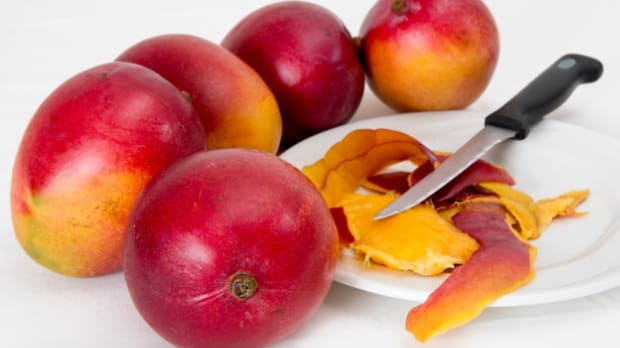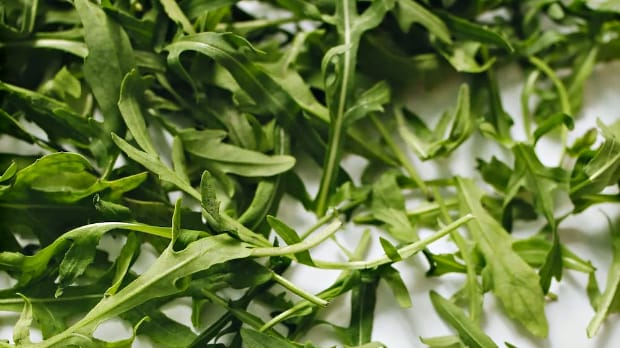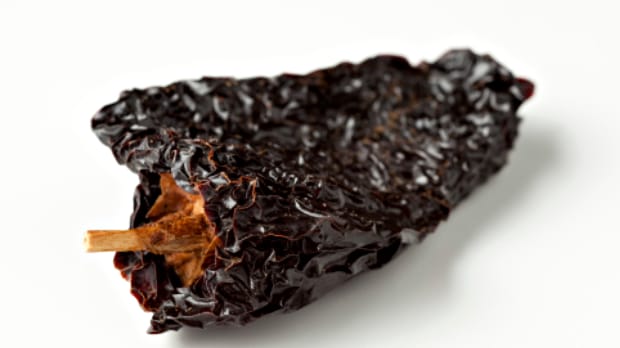What is Mango?
Mango, pronounced [Mang-go], is a tropical fruit that grows on evergreen trees that can reach a height of up to 60 feet tall. This fruit is native to Southeast Asia, where it has been cultivated for over 4,000 years. Most of the mangos that are available in the United States are imported from countries such as Mexico, Haiti, the Caribbean Islands, and South America. It is interesting to note that there are over 1,000 distinct types of mangos grown worldwide. Mango cultivation has become a widespread practice in many areas of the tropical and sub-tropical regions, as this type of climate is ideal for growing these fruit-bearing trees. So, whether you enjoy fresh mangos or recipes that include their sweet, juicy flavor, you can take comfort in knowing that this fruit has a rich and varied history with plenty of cultivated varieties available.
What are the Nutritional Benefits of Mango?
Mangos not only taste great, but they also offer an array of nutritional benefits that can help us maintain a healthy lifestyle. Mangos are naturally high in vitamins A and C, which are essential for healthy skin, immune system function, and vision. They also contain a significant amount of dietary fiber, which aids digestion, helps regulate blood sugar levels and may reduce the risk of heart disease. In addition, mangos contain beneficial antioxidants, such as zeaxanthin and beta-carotene, which may help protect against cancer and other chronic diseases. Furthermore, these tropical fruits are also rich in potassium, which can help lower blood pressure and support cardiovascular health.
The versatility of mangos is another plus point! They can be incorporated into a wide variety of recipes – from savory dishes to desserts and smoothies. Try tossing in some fresh or frozen mango chunks into your yogurt or oatmeal to add some natural sweetness and a boost in nutrition! So, next time you’re craving something sweet and satisfying, reach for this tasty tropical fruit and indulge in its deliciousness while nourishing your body with all the benefits it has to offer.

Types Available
If you’re a fan of mangos you may be wondering, “What are the different types are available?” Well, there are actually quite a few. They come in a range of colors and textures. Not all of them change color when they’re ripe either, so it’s best to give them a gentle squeeze. Here are some of the most popular types available in the United States:
Tommy Atkins: This mango is the most commonly grown in the United States. It has a firm texture and sweet flavor. Sqeeze gently to determine ripeness.

Kent: This mango is grown in Mexico, Ecuador, and Peru. It has a sweet, juicy, and fiberless flesh. It turns yellow and gets dots as it ripens.
Honey (Ataulfo): This small, yellow mango is originally from Mexico and is known for its creamy texture and sweet flavor. The skin will wrinkle and turn deep golden color as it ripens.
Francis: A yellow and green mango with a s-shape that comes from Haiti. This variety is sweet and has a fibrous texture. The green coloring will go away as it ripens.
Haden: This mango is very popular in the United States and has a rich, sweet flavor with a thick pulp without any fibers. It is red in color with some green and yellow. The green will turn to yellow as it ripens.
Keitt: Keitt mangos are sweet and citrusy. These large green mangos stay green even when they’re ripe, so give them a squeeze.
What are the Best Uses?
Are you wondering what to do with that ripe mango on your kitchen counter? Fear not! As a food blogger, I’ve got plenty of suggestions for you. First and foremost, one of the best uses for a mango is to simply slice it up and eat it as a snack. Mangos are low in calories but high in fiber, making them a great option for those watching their weight or trying to maintain a healthy lifestyle.
Another delicious way to enjoy mangos is by adding them to smoothies. Try blending a ripe mango with some almond milk, frozen banana, and a handful of spinach for a refreshing and healthy breakfast.
If you’re feeling more adventurous, try making a mango salsa to serve alongside fish or grilled chicken or just eat it with some chips. Simply follow my recipe for Pico de Gallo. Then, add diced mango, about equal portions to the tomato. Mix it all together and you have a sweet and spicy tropical salsa.
Mangos also pair well with spicy foods. Consider adding diced mango to your favorite curry dish or using it as a topping for tacos or nachos. It also tastes amazing grilled. Add large chunks to your chicken kebobs for a tropical twist.
Lastly, if you’ve got an abundance of ripe mangos on hand, consider making mango jam or chutney. These can be used as a spread on toast or biscuits, or as a condiment for grilled meats.
How do You Store Mangos?
Are you a fan of the juicy and delicious fruit, mango? Do you often wonder how you can store your precious supply of mangos so that they stay fresh and flavorful? Well, you’ve come to the right place! First things first, always make sure to choose ripe and unblemished mangos when purchasing. When it comes to storing them, it’s best to keep them at room temperature until they are ripe. You’ll know they’re ripe if they give gently when you squeeze them. Not all varieties change color when they’re ripe.
Once they’re fully ripe, you can choose to store them in the refrigerator to extend their shelf life. They will last about 5 days. Another option is to freeze your mangos. To do this, cut the mango flesh away from the pit and place the chunks in an airtight container or freezer bag. They can be frozen for up to 6 months and are perfect for smoothies or desserts. In summary, storing mangos is simple as long as you choose ripe and undamaged fruit, keep them at room temperature until they’re fully ripe, and then refrigerate or freeze them as desired. With these tips, you can keep your mangos fresh and delicious for all your culinary creations!
How to Prepare a Mango
Today, let’s talk about one of my favorite fruits – the mango! Sweet, juicy and oh-so delicious, mangos are a fantastic addition to any healthy diet. But how do you prep this tropical treat properly? First things first, choose ripe mangos that give off a fruity fragrance. When they’re ripe, the fruit should also feel slightly soft to the touch. Next, wash it thoroughly under cool water.
The best way to prepare a mango is to cut it into chunks. You can do this by slicing off each side of the fruit, avoiding the large seed in the center. Then, score each slice into bite-sized pieces and scoop the flesh out with a spoon.
If you prefer to eat the skin, make sure to remove any stem material and wash it thoroughly. Lastly, enjoy your tasty and nutritious treat on its own or add it to your favorite salad or smoothie! Remember, mangos are a great source of vitamins A and C, antioxidants, and fiber. So, get ready to boost your health and satisfy your taste buds with this exotic fruit!
When are Mangos in Season?
If you’re a big fan of mangos, you might be curious about when they are most delicious and readily available. The good news is that mangos are a seasonal fruit, which means that you can enjoy them at their best during certain times of the year. In the United States, mangos are typically in season during the summer months, from May to September. This is when you’re most likely to find high-quality, fresh mangos at your local grocery store or farmers’ market.
No matter where you are, it’s important to look for ripe, fragrant mangos that give slightly when you gently press them. For some varieties, you can also tell if the fruit is ripe by its color, however not all of them will change color. So, if you’re a mango lover, make sure to plan your shopping trips around the peak season in your area. Trust us, your taste buds will thank you!
Improve Your Health With Seasonal Eating
What to Serve Mango With?
- Coconut Rice
- Grilled Shrimp
- Avocado Salad
- Pork Tenderloin
- Cilantro Lime Chicken
- Watermelon Salsa
- Black Beans and Rice
- Roasted Sweet Potatoes
- Mango Salsa
- Greek Yogurt Parfait
What Traditional Cuisines Use Mango?
Mango is a popular ingredient in many traditional cuisines around the world. In India, the tropical fruit is commonly used in chutneys, desserts, and curries. Mangos are often used in salads, salsas, and drinks in southeast Asian cuisine. In Latin American cuisine, mango is used in smoothies, ceviches, and as a topping for tacos. Caribbean cuisine also incorporates mango into many dishes such as curries and stews. Additionally, mango is used to make jams and jellies in many parts of the world.
Tasty Recipes
- Mango French Toast
- Mediterranean-Style Mango Salad Recipe
- Chipotle-Mango BBQ Chicken
- Fresh Mango Cobbler
- Sweet and Spicy Mango Shrimp
Key Takeaways
- Mango is a great source of vitamins, minerals, and antioxidants.
- Wash the mango before cutting and eating it.
- Peel the skin before eating.
- Cut the mango into slices or cubes for easy eating.
- Eat the tropical fruit as a snack or use it in recipes like smoothies, salads, salsas, or sauces.
- Mango can be cooked with other fruits, vegetables, spices, and herbs for unique flavor combinations.
- Store mango in a cool, dry place to keep it fresh for longer.
References: The Health Benefits of Mango | Nutritional value and health benefits of mango | Mango: A Potent Source of Nutraceuticals and Functional Food Components | A review on nutritional and therapeutic potential of Mangifera indica L. | The health benefits of mango |




